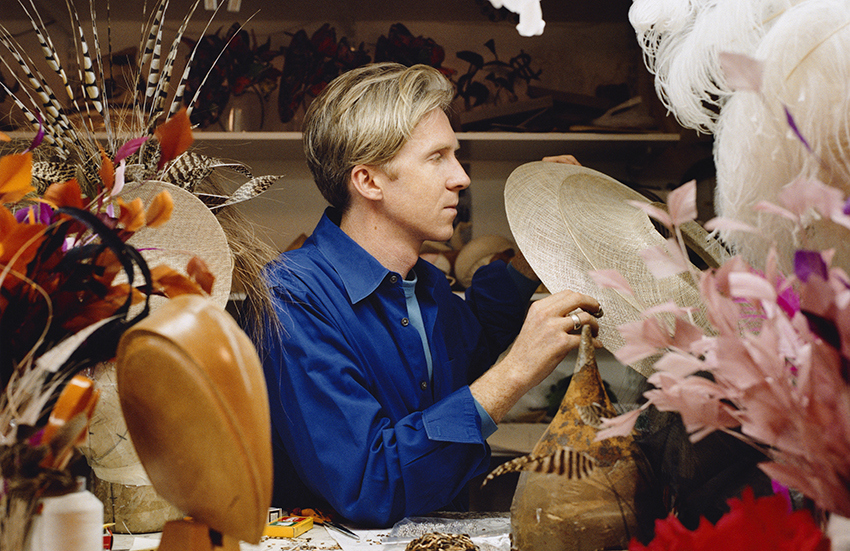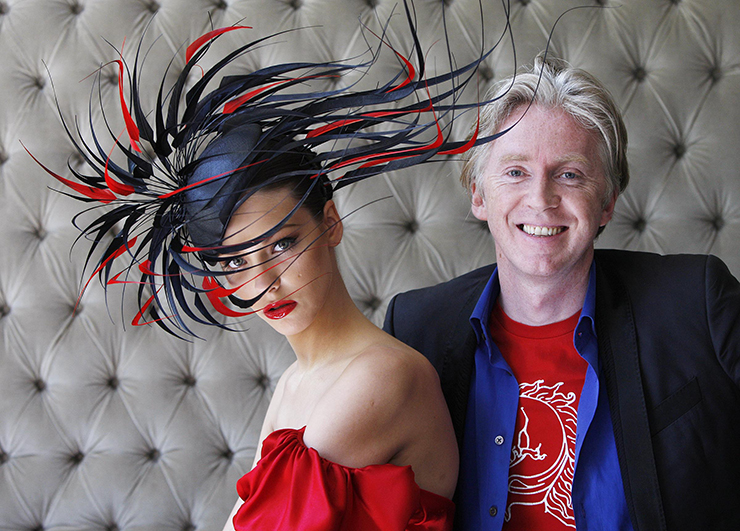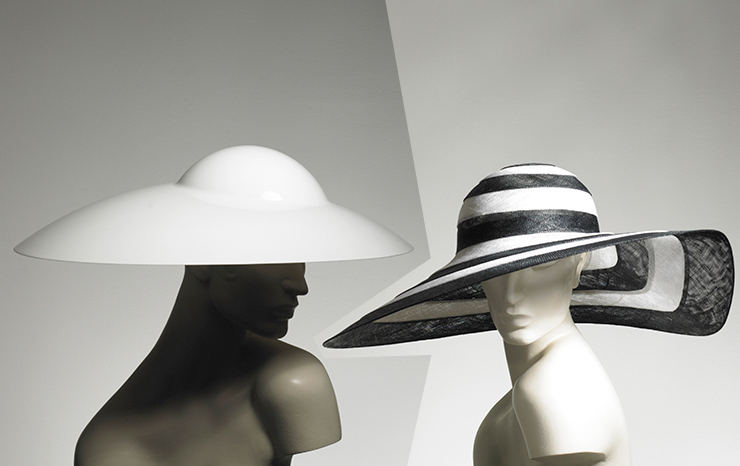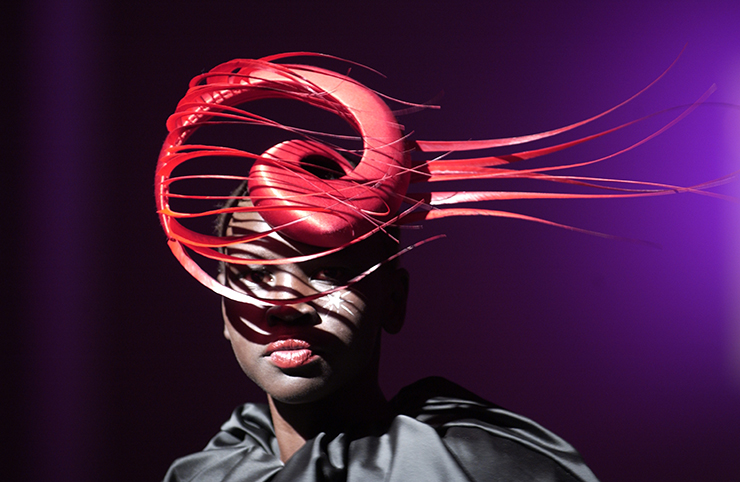Philip Treacy

Celebrity hat designer, known for his collaboration with different ‘haute couture’ clothes brands like Chanel and Karl Lagerfeld, designed unique hats for the wedding of the Prince of Wales… and the list of his achievements grows with each day.

The Fashiongton Post: Philip, as we know, you got the interest in sewing and designing yet in the early childhood, when you were five years old. Was it the influence of your parents or was it on the contrary, something they never encouraged?
Philip Treacy: I started sewing when I was about five. I remember being with the teacher in school. The boys did woodwork or something, the girls were sewing and I thought: ‘Why can’t I do that?’ I asked the teacher and she said: ‘Okay.’ She was incredibly strict and, looking back, she could have just whacked me around the head. I started making dresses and hats for my sister’s dolls. My mother had chickens, geese, pheasants and ducks, so all the ingredients of the hat were in my house. My mother had a sewing machine. I was never allowed to use it, but I was so fascinated by this little needle going up and down joining fabric together that I would use it when my mother went out to feed the chickens. There was like five minutes to get it out. If my mother found me I would be in a lot of trouble. I used to make clothes for my sister’s dolls. I couldn’t care less for the dolls but I could make the clothes really easily. I was making bust points before I knew what bust points were. I remember being in a neighbour’s house and he said to my father: ‘Don’t you think it’s weird that this boy is making dresses for dolls?’ And my father said: ‘Whatever makes him happy.’ You have got to see where I come from to understand how profound that was.
F.P.: Have you learned a lot from the time you spent with the known hat designer Stephen Jones?
P.T.: Stephen Jones pioneered contemporary millinery in the early eighties and certainly inspired me to think about hat design in a whole new way. I had a fantastic work experience at Stephen Jones while I was a student; I remember his kindness to me fondly. Stephen Jones hats are quintessential millinery.
F.P.: Tell us about the process of sketching a design of a hat. Does it appear on the paper step by step and line by line during the process of creation or you sit down to draw the sketch only after you imagined the complete concept in your mind and know every single detail of the hat you are going to create?
P.T.: The hats usually start off as drawings. Then I make a mock up in a very light flexible material called sparterie and this goes to the block maker in Paris. He then uses the model as a map, or a key, to carve the actual shape in wood, using measurements, but mostly his eye. I depend on his desire to make his block look exactly like the form I gave him and which to capture every single nuance of the original shape, because in hat making let me tell you, even a fraction of an inch is crucial. It’s all very precise.

F.P.: How would you define your personal style which, as we see, distinguishes you from many other fashionable hats’ designers?
P.T.: My brand philosophy is all about attention to detail, contemporary design, luxuriousness and elegance, I consider all of these factors whether I’m creating a new hat or branching out into different areas of design such as clothing or interiors so whatever I do has my signature style.
F.P.: Your favorite colors to work with?
P.T.: Bright and neon colors.
F.P.: Philip, tell us more about your first visit of France, when you came to CHANEL to meet Karl Lagerfeld. We heard there were some interesting and funny things connected with that visit and your first impressions.
P.T.: I was summoned to Paris to meet Karl Lagerfeld, chief designer at Chanel. I was 23. I’d just left school. I didn’t know whether to call him Mr Lagerfeld or whatever. I was totally intimidated but my friend Issie was exactly herself. She just walked into the house of Chanel and said: We’d like some tea please.’ I went on to design hats for Lagerfeld at Chanel for ten years.
F.P.: What are your favorite fabrics and materials to work with and why?
P.T.: No, there’s no limit to what you can do in fashion! I like to work with all kinds of materials, and birds in particular are exquisite perfection. Their feathers are weightless, they give movement and volume – women love them and they are very sexy. I like to invent new ways of using farmyard fowl; feathers feel like living, breathing material. You are drawing with them rather than just decorating a hat.

F.P.: How did you get an assignment for creation of the hats for the wedding of the Prince of Wales? Did they approach you by themselves or there was someone to introduce and recommend you prior to that?
P.T.: One of my proudest moments was the wedding of HRH the Duchess of Cornwall and Prince Charles. She is in the business of wearing hats, she’s letting me make the sort of hats I love – she is the dream client for me! I remember my first meeting with her when I walked down the stairs of my London store and found that she had calmed and charmed my dog Mr. Pig, that’s when I knew we were destined to get on.
F.P.: What would you call as the adventure of all your life for today?
P.T.: Being asked to design so many hats for the Royal Wedding was a great honor; it has been one of my proudest moments to date.

F.P.: And traditionally, Philip, some pieces of advice to the readers of ‘The Fashiongton Post’!
P.T.: A good hat is the ultimate glamour accessory. It thrills observers and makes the wearer feel a million dollars. This creates a high status of desirability and although the images received can seem out of this world the conspicuous consumer relates strongly to it. The message is simple and absolute, a great hat exists outside it’s own time. I don’t believe in elitism in fashion. Fashion is for everybody to enjoy and it’s everybody’s right to look great!



*Official website of Philip Treacy: www.philiptreacy.co.uk

